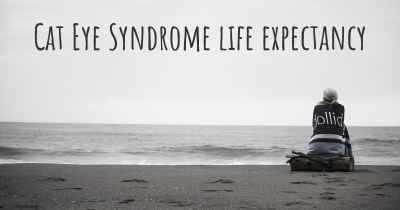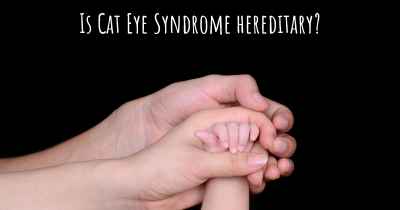Living with Cat Eye Syndrome. How to live with Cat Eye Syndrome?
Can you be happy living with Cat Eye Syndrome? What do you have to do to be happy with Cat Eye Syndrome? Living with Cat Eye Syndrome can be difficult, but you have to fight to try to be happy. Have a look at things that other people have done to be happy with Cat Eye Syndrome

Living with Cat Eye Syndrome
Cat Eye Syndrome, also known as CES or Schmid-Fraccaro Syndrome, is a rare genetic disorder that affects a person's physical and intellectual development. It is characterized by a distinct set of symptoms, including coloboma (a malformation of the eye), anal atresia (absence of the anal opening), and preauricular pits or tags (small holes or extra pieces of tissue near the ears). Living with Cat Eye Syndrome can present unique challenges, but with the right support and strategies, individuals with CES can lead fulfilling lives.
Medical Management and Support
When diagnosed with Cat Eye Syndrome, it is crucial to establish a comprehensive medical management plan. Regular visits to a team of healthcare professionals, including geneticists, ophthalmologists, pediatricians, and other specialists, can help monitor and address the specific needs associated with CES. These professionals can provide guidance on managing eye abnormalities, addressing gastrointestinal issues, and monitoring overall health and development.
Early Intervention and Education
Early intervention is key for individuals with Cat Eye Syndrome. Accessing specialized educational programs and therapies can help address developmental delays and maximize potential. Early intervention services may include speech therapy, occupational therapy, physical therapy, and educational support tailored to the individual's needs. It is important to work closely with educators and therapists to create an individualized education plan that promotes growth and learning.
Emotional Support and Community
Living with Cat Eye Syndrome can sometimes be emotionally challenging, both for individuals with CES and their families. Seeking emotional support and connecting with others who share similar experiences can be immensely beneficial. Joining support groups, participating in online communities, or attending conferences and events related to Cat Eye Syndrome can provide a sense of belonging, understanding, and valuable information. It is important to remember that you are not alone in this journey.
Adaptive Strategies and Assistive Devices
Depending on the severity of symptoms, individuals with Cat Eye Syndrome may benefit from adaptive strategies and assistive devices to enhance independence and quality of life. These can include using visual aids, such as magnifiers or large-print materials, to compensate for vision impairments. Occupational therapists can provide guidance on adaptive tools and techniques to improve daily living skills, while assistive devices like hearing aids or communication devices can assist with hearing or speech difficulties.
Regular Health Maintenance
Individuals with Cat Eye Syndrome should prioritize regular health maintenance to monitor and manage potential complications. This includes routine check-ups, vaccinations, and screenings as recommended by healthcare professionals. Maintaining a healthy lifestyle through balanced nutrition, regular exercise, and sufficient rest is also important for overall well-being.
Advocacy and Self-Empowerment
Empowering individuals with Cat Eye Syndrome to advocate for themselves and their needs is crucial. Encouraging self-expression, fostering independence, and promoting self-advocacy skills can help individuals with CES navigate various aspects of life. It is important to educate oneself about Cat Eye Syndrome, stay informed about available resources, and actively participate in decision-making processes related to healthcare, education, and other areas of life.
Conclusion
Living with Cat Eye Syndrome may present unique challenges, but with the right support, strategies, and a positive mindset, individuals with CES can lead fulfilling lives. By accessing appropriate medical care, early intervention services, emotional support, and adaptive strategies, individuals with Cat Eye Syndrome can overcome obstacles and thrive. Remember, each person's journey with CES is unique, and it is important to tailor approaches and support to individual needs.








